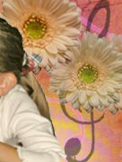Schools and businesses are systems, and the most successful know how to balance their environments with production and creative ingenuity. Take “Google” for example. This is a company that utilizes creativity to motivate its employees. It hires, keeps, and attracts the brightest people in the field of technology. Why? Because it has flexible hours, a working environment so comfortable that employees want to stay, thus encouraging creative idea sharing during all parts of the day; for example, a gourmet cafeteria, workout rooms, spa, on-site daycare, meditation gardens, etc. The idea is that creative juices will flow throughout the day, not just during a set time period. What happens when employees collaborate with each other, have a say in decision-making, and are allowed to voice their opinions freely in an atmosphere of mutual respect?
Creative people exhibit the signs of joy and vitality in their work and social environment. In his article Happiness and Creativity: Going with the Flow, Mihaly Csikszentmihalyi writes, “For many people, happiness comes from creating new things and making discoveries. Enhancing one’s creativity may therefore also enhance well-being.” Would employees at Google see themselves as self-actualized?
Think about a classroom environment that has flexible work areas, a variety of resources and materials, small and large group opportunities for discussion, a motivating teacher, student involvement in curriculum and assessment choices, and the opportunity to work on independent projects. Think about how can you integrate creativity within and across content areas while focusing on process as well as product. How can creative thinking be used to address problems in our society? Can you see the correlation between school and real world and the creative process?







